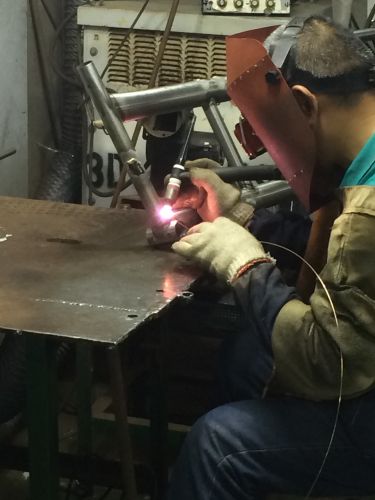Coming across two articles got me to thinking about the latest "boom" in bicycling.
I never thought about that last point until I read about the Kamps in Ankeny, Iowa. Nine years ago, the mother, Angie (who shares my mother's name!) gave birth to triplets--at 25 weeks. While Annalise, Brenna and Lucy all had complications, Brenna has had it worst, with cerebral palsy, epilepsy, hydrocephalus.
While I certainly see more people cycling to work and school, or for pleasure, than I did in my youth, I can't help but to conclude, at least from my own observations, that the demographics of cycling really haven't changed during the more than four decades I have been a committed cyclist.
These days, I almost never ride more than a few blocks before I see another cyclist who's old enough to have a driver's license. Time was when I could ride all day and not see another adult on a bike, even when the weather was nice.
To be sure, there I see more nonwhite and female cyclists now than I did then. But most of the folks I see riding on the streets, on the paths or in the parks are white and male--and young. Apparently, the situation is similar in San Francisco and other cities.
If bike lanes in that city are indeed "five feet wide, white and male", they are also most likely young and single. In some parts of this city, I rarely see adults, male or female--let alone families--on bicycles. I have never had children, but I imagine it can be difficult for families to ride together, especially if the children vary widely in age--and if one has a disability.
I never thought about that last point until I read about the Kamps in Ankeny, Iowa. Nine years ago, the mother, Angie (who shares my mother's name!) gave birth to triplets--at 25 weeks. While Annalise, Brenna and Lucy all had complications, Brenna has had it worst, with cerebral palsy, epilepsy, hydrocephalus.
When they were younger, the girls, Angie and their father Brad rode together on tandem trikes. Now Annalise and Lucy can ride on their own, but it's more difficult for even her mom or dad to ride a bike with Brenna because "she's gotten bigger", which means that "if she leans one way or another, it kind of takes the whole bike down."
Now the Kamps are in the running for The Great Bike Giveaway, its prize being an adaptive tandem cycle in which an adult can ride on the rear. Whoever gets the most votes wins the bike.
I don't know the Kemps, but I'm rooting for them--and for more people who are unlike the young white male I once was to ride. Not that I have anything against young white dudes--or single people (I am still one, after all!), but because cycling has opened up the world to me, I want to see more of the world cycling.





















